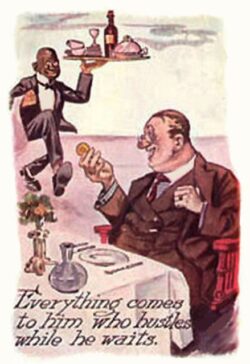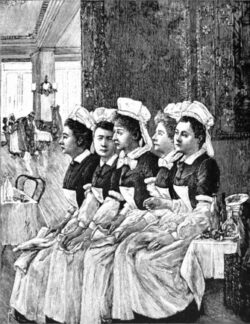Read Time: 7 Minutes Subscribe & Share
The Great Divide
 One of the cultural chasms between the west and east sides of the great Atlantic pond is the history of tipping for food services. Before we left for Bologna, the advent of the Covid quarantines had increased the methods of contactless payment. Those now ubiquitous little screens at many counters have tip options staring at you before you press to pay. Right before we left, if we bought meat or fish at a store, or a sandwich at a deli counter, or fast food at a digital kiosk so I’m told), the little blue screen would pop up a selection of tip choices, sometimes with a zero option and sometimes not. Of course phone apps also now have tip options, forcing you to decide how to reward service you have yet to receive, before you reserve a ride or order your food — and they sport pretty high minimums. We used to tip food delivery personnel in cash, as we were never sure how the tip charged on the app would be shared with the worker.
One of the cultural chasms between the west and east sides of the great Atlantic pond is the history of tipping for food services. Before we left for Bologna, the advent of the Covid quarantines had increased the methods of contactless payment. Those now ubiquitous little screens at many counters have tip options staring at you before you press to pay. Right before we left, if we bought meat or fish at a store, or a sandwich at a deli counter, or fast food at a digital kiosk so I’m told), the little blue screen would pop up a selection of tip choices, sometimes with a zero option and sometimes not. Of course phone apps also now have tip options, forcing you to decide how to reward service you have yet to receive, before you reserve a ride or order your food — and they sport pretty high minimums. We used to tip food delivery personnel in cash, as we were never sure how the tip charged on the app would be shared with the worker.
Separation Non-Anxiety
Now we are separated from the obligatory 20% tipping pressure in food venues in the US, much to the joy of Mr. Wallet, who is a generous tipper. In fact, it was very difficult for him to stop tipping when we first traveled to Europe. I remember a couple of times in France when a restaurant worker ran after him to give him back his money. Here in the EU, while the wage scales vary according to member countries, servers and bar personnel are paid a much better wage than in the US. At most, people may leave a few coins if they are really happy with the service or food.
Your restaurant bill here will include a coperto – in France it is service compris – a cover charge which is not the same as an obligatory tip. It’s sort of a small surcharge to defray the cost of table service – you might get bread, but you do pay for your choice of bottled water. In the US now as well as the UK, you are asked if you want bottled (paid) or tap for free. As a side note, I was surprised that when we were in the UK, an ice-filled glass of water had become unpleasant to me.
Here and in other EU countries, restaurant staff are paid salaries to meet national laws, (which vary within the EU) and the burden of your waiter’s salary is not foisted onto the client’s shoulders. In Italy, Denmark, Austria, Finland, and Sweden, there is no minimum hourly wage, but rather employment contracts. Statista clocks the Italian average wage to be a bit over 17 euros per hour – taxes are higher but then there are also greater social and medical benefits. Tipping an extra amount is rarer, more fluid, and more confusing to a visitor. At most, a citizen here might pay an extra 10% if the meal was exceptional, the staff more than accommodating to one’s needs. But mostly, leaving a couple of euros for extra nice service or a really good meal at a low price is what you will see.
The Tipping Trail
So I was curious as to how these divergent paths occurred between the New and Old World. In a century of minimum wage mandates, somehow, the US food service industry has worked out an alternate deal, and it has leaked into other service venues. US waitstaff are paid a bit over $2.00 an hour with the understanding that a 20% tip from customers will give them a living wage. Apparently north of our border in Canada, the expected tip is 10 to 15%. On our southern border, hospitality personnel in Mexico, according to internet guides, also rely on tips to scrape together a minimum living wage.
To Insure Promptness
It has not been really proven that the term To Insure Promptitude or To Insure Promptness was really written on dishes in taverns in the previous centuries in England. But that is one of the theories behind the word “tip.” Since the word for tip in France is pourboire and trinkgeld in German for drinking money, could it be that in merry old English a tip is short for money for a “tipple”?
But tipping really is a holdover from medieval master vs serfdom. The idea of giving a servant a small amount of money for a task well done goes back to Tudor England, when the nobility gave a few coins to servants who performed well. Some reading of English 19th century literature will discuss the giving of “vails” if you were visiting an estate. It was thought a proper social custom that any noble visiting another’s home would leave a little money to the servants for guest services performed during their stay. With the advent of coffee houses or cafes, this leaving a few coins to the poor server may have been an extension of that social custom in which you, the client, were superior to the lowly server.
Sometime in the mid-nineteenth century, this European aristocratic custom impressed newly wealthy Americans who were on cultural tours to the Old World. It is generally believed that these returning Americans (read Elizabeth Wharton and Henry James) felt that it made them more “aristocratic” if they left money for servers in restaurants and probably some other trades. Ironically, there was a fair amount of public criticism of this new sort of pseudo-aristocratic pretension. It was felt to be undemocratic in this country that was formed as an Enlightenment rebellion against the European monarchies and aristocracies. And there is even some evidence that this American criticism reverberated back to Europe and ultimately, over time, tipping was abandoned with the rise of the workers political parties, unions and protests – as being undemocratic and not a substitute for a wage.
Reverberations Of The Original Sin
One of the many devastating ironies of our Civil War is that former slaves who were unable to become sharecroppers had no access to earning a living other than very menial jobs – servers, porters, household servants. And employers learned (The Pullman company of railroad fame is an egregious example) that they could, through tipping, shift the “pay” to the client for services such as serving food, making beds, shining shoes, washing and ironing clothes. This effort to shift the wage of the worker onto the client by an employer was not without criticism. Much was written against it. Several states even passed laws against tipping. But in 1926 the Supreme Court wiped out all local ordinances against tipping.
become sharecroppers had no access to earning a living other than very menial jobs – servers, porters, household servants. And employers learned (The Pullman company of railroad fame is an egregious example) that they could, through tipping, shift the “pay” to the client for services such as serving food, making beds, shining shoes, washing and ironing clothes. This effort to shift the wage of the worker onto the client by an employer was not without criticism. Much was written against it. Several states even passed laws against tipping. But in 1926 the Supreme Court wiped out all local ordinances against tipping.
 In 1938 Franklin Roosevelt signed the first minimum wage bill, which excluded food service workers, who were predominantly Black (and also it should be noted, women). The National Restaurant Association, which was founded in 1919, had lobbied successfully to simply exclude food service employees. You should know that this organization has millions to spend partially through its obligatory food service “classes” – and it works tirelessly to keep restaurant workers at the sub- minimum wage level. So far, they have succeeded.
In 1938 Franklin Roosevelt signed the first minimum wage bill, which excluded food service workers, who were predominantly Black (and also it should be noted, women). The National Restaurant Association, which was founded in 1919, had lobbied successfully to simply exclude food service employees. You should know that this organization has millions to spend partially through its obligatory food service “classes” – and it works tirelessly to keep restaurant workers at the sub- minimum wage level. So far, they have succeeded.
Minimum Tipped Wage
In 1966 our Congress overhauled the Minimum Wage Act, and the rate was increased from $5.15 to $7.25/hour – where it stands today. But the NRA (the food one not the gun one) lobbied heavily to weasel out a formal exclusion for restaurant workers (Including bartenders, food delivery drivers, valet parking personnel) so that the wage would remain at the $2.13 level. In a brilliant but nefarious piece of legislative double speak, a complex formula for filing both employer and employee taxes, known as a tipped credit report was included. It is locked into POS systems, but even cash tips have to be recorded. A maximum of $5.12/hour of a server’s tips can be credited to the employer so that ($5.12+2.13=7.25) it makes it appear that they’re paying a minimum wage level. This does not take away the tip from the server to the employer, but rather the sum is hypothetically added to the hourly wage on the restaurant’s tax documents as well as the employee’s. It’s all sleight of hand. A few states have independently raised the minimum wage standard, but the same principle applies on the paystub.
A restaurant can show on its tax returns that a worker’s salary has been supplemented by tips. If the money “earned” by the server does not meet the required minimum wage, then the restaurant worker is owed the difference to equal $7.25 per hour. You can read about some of the details involved in this complex formula here. Some restaurant servers do well, and the myth of pocketing extra income helps keep this system alive. The NRA’s money and Congressional influence worked to save restaurants the expense, and so your server depends on you – the diner – for a living wage.

Kitchen Detail shares under the radar recipes, explores the art of cooking, the stories behind food, and the tools that bring it all together, while uncovering the social, political, and environmental truths that shape our culinary world.




I believe I am already on one of your email lists as I get information from you at La Cuisine but I am delighted to be added to KD list.